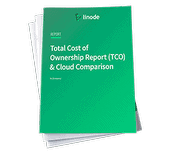NodeBalancers - Get Started
Managed cloud-based load balancing service offering high availability and horizontal scaling to any application.
Configure a NodeBalancer
Visit the NodeBalancers page in the Linode Cloud Manager and select Add a NodeBalancer.
For the example web application, only one NodeBalancer is needed. Add one in the same data center that your backend Linodes are located in.
A NodeBalancer is configured using ports. This example web application only uses port 80 (for regular HTTP traffic).
HTTP
For the traditional web application, the settings in the screenshot above are a good start. HTTP cookie stickiness is preferred so that the same client always lands on the same backend. For a simple web application that keeps sessions in memory, this is necessary to avoid session errors on clients.
HTTPS
If you select the HTTPS protocol, two new fields appear. These fields accept your SSL certificate, chained certificates (if applicable) and a private key (which must not have passphrase protection).
Every ten seconds, the NodeBalancer requests the root of the web application and looks for a valid response code. With this example setup, there is only one backend node (which is added in the next step). If the backend goes down, the NodeBalancer serves a plain 503 Service Unavailable error page. This is more desirable than refusing connections or making browsers wait for a timeout.
Next, add the single backend node to the NodeBalancer’s configuration. Point this at the private IP address of your web server Linode.
These configuration changes take a few moments to be reflected by your NodeBalancer. If everything is configured on your backend correctly, once the changes have gone through, the Node Status column updates to 1 up / 0 down.
If the backend status reports 0 up / 1 down, check to make sure that your web application is configured to respond on the Linode’s private IP address. You do this by adding the private IP address to your
/etc/hostsfile on your Linode and then reboot your Linode. There might be a virtual host mismatch as well – check the notes in the next section.Now that the backend is up, go directly to your NodeBalancer’s IP address in a browser. You should see your web application as the NodeBalancer proxies the traffic through.
This page was originally published on





